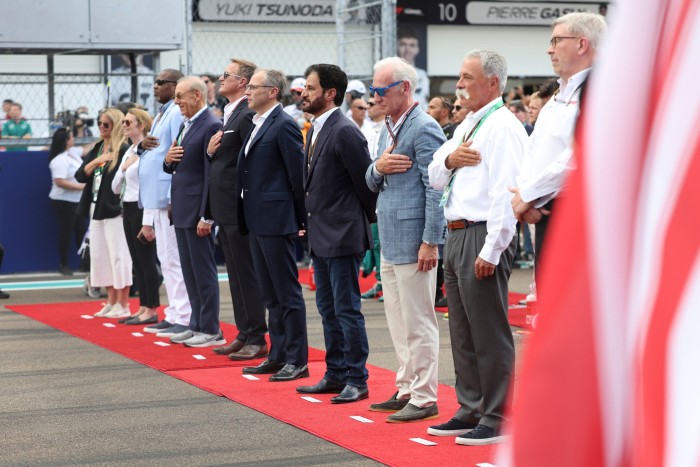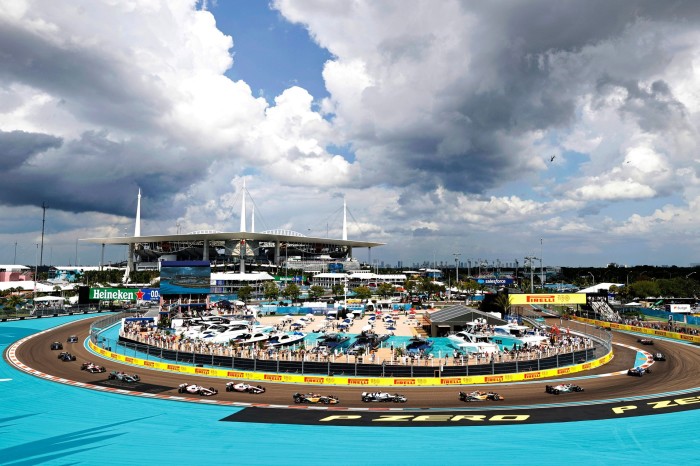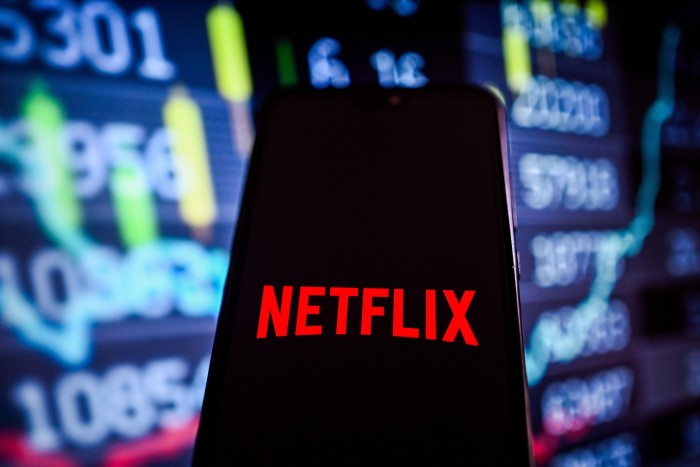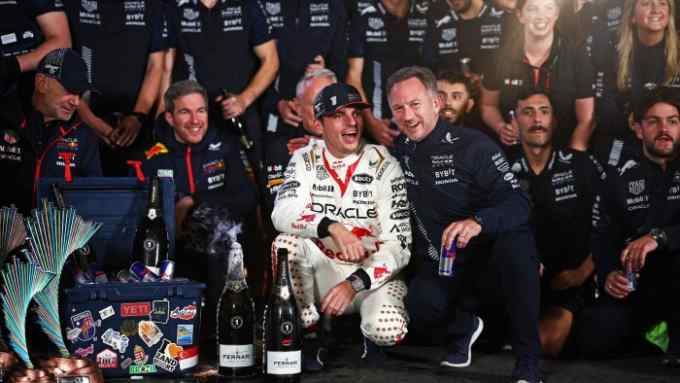After years in the pits, F1 goes up a gear in the US market

Roula Khalaf, Editor of the FT, selects her favourite stories in this weekly newsletter.
If you were to pick one scene in Netflix’s vaunted docu-series Drive to Survive that summed up the state of Formula One in 2023, it would not be Max Verstappen dramatically pipping Lewis Hamilton to the 2022 drivers’ championship, nor another monologue of Teutonic inspiration from Mercedes team principal Toto Wolff, one of the show’s real stars.
No, it would probably be F1 chief executive Stefano Domenicali singing the “Star-Spangled Banner” ahead of Miami’s first-ever Grand Prix. And, after the Italian’s accent adapts with surprising accuracy to the opening bars of the US anthem, he pauses to tell the story of this new decade for F1. “Breaking [into] America is very important,” he says, and F1 has never been so close to achieving that decades-old ambition.
For years, it was the impossible dream for a sport that had a foothold in almost every major international market.
When experiments in hosting races in Detroit and Phoenix during the 1980s failed, with tens — possibly hundreds — of millions of pounds wasted on chasing the American sports fan, F1’s then supremo Bernie Ecclestone lost patience with the country and pulled out altogether in 1991.
While he denied it was due to poor attendances, that problem was impossible to ignore. And, with minimal visibility or coverage in mainstream media, F1 in effect gave up on its American ambitions for much of the decade.
But, today, empty stands and unsold corporate boxes are unthinkable. The US has hosted three races for the first time, among them two of the F1 calendar’s crown jewels, in Miami and, for the first time, a Las Vegas street race up the world-famous strip.

So, even if F1 does not yet believe it has cracked America, there are signs that it is close. After years of complex marketing strategies and dragging races from the east to the west coast, what appears to have made the difference is that Netflix series.
By 2021, just two years after Drive to Survive first streamed, F1’s website received more visitors from the US than any other country. The shift has been extraordinary — although some of it may be down to good fortune.
Series 2 of the show was released on February 28, 2020. A week later, much of the western world shut down due to the coronavirus pandemic — and people turned in their droves to streaming media for entertainment. With the front page of Netflix boasting one of the most powerful recommendation engines in media, Drive to Survive was served to millions of users and became an indisputable success story of the pandemic.

The 2021 Drivers’ Championship, taking place in the first full season after Covid restrictions, then became one of the most thrilling week-to-week tussles in the sport’s recent history — further immersing new fans and driving ratings through the roof as Verstappen edged out Hamilton for the championship.
While the streaming company is notoriously coy about its data, the success of Drive to Survive has been so great that it has transformed not only F1’s international strategy but that of Netflix itself, which has shied away from live sport and instead doubled down on docu-series — investing heavily in tennis and golf equivalents.
Nielsen Sports has estimated Drive to Survive’s cumulative viewership globally to be more than 250mn, with nearly 100mn of those in the US.
F1 claims 75 per cent of its audience is under 45 and 32 per cent of its 44mn US-based fans are women — a far greater proportion than most of America’s major sports.
Its audience is also more diverse, with the sport particularly popular in the Hispanic community, which accounts for about 20 per cent of US fans. Meanwhile, 77.2 per cent of F1 fans identify as socially responsible, compared with 44.9 per cent for non-fans and 58 per cent for the general public. This suggests F1 fans are younger and more likely to live in cities compared with other sports. That opens doors with certain partners and advertisers, but also provides prime customers for the rest of F1’s extensive business.
Formula One is, in many ways, the closest thing sport has to a global conglomerate. It boasts a worldwide luxury events business that takes in many of the world’s premier cities, an enormous media arm with a growing direct-to-consumer offering, a licensing and rights business with deals in more than 100 territories, and a high-level sporting competition with all the sponsorship opportunities that affords.
In the same way that UK Premier League football clubs target American fans — because of their penchant for merchandise, travel and digital engagement — F1 now has a huge cluster of young fans in the US who are buying Ferrari polo shirts, subscribing to F1’s over-the-top content platform, or walking along South Beach before the first-ever Miami race.
Formula One’s revenue was $1.83bn in 2018. By 2022, that figure had risen to $2.57bn. From that point of view, Drive to Survive has undoubtedly been a success in widening the funnel. Now, the question for F1 — as the post-pandemic world continues to open up and championship races return to being more predictable — is whether it can keep these newfound fans on board.
Only then will F1 truly be able to say it has cracked America.

Comments